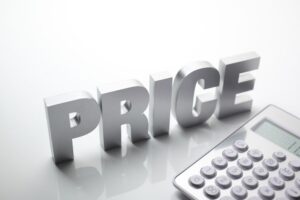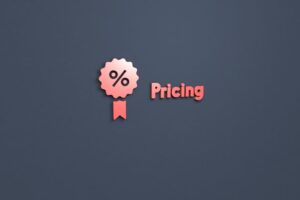What is Bundle Pricing?
Bundle pricing is a marketing strategy used by businesses to offer a bundle deal that includes two or more related items or services at a discounted price in order to entice customers to make multiple purchases at the same time. This strategy is common in many industries, including technology, fast food, and telecommunications.
Bundled package is priced lower than the total cost of the individual items if bought separately. For instance, imagine a SaaS company offering three services – cloud storage, customer support, and software upgrades. Each service costs $10 per month, making it $30 per month for all three.
However, with a bundle pricing strategy, the company offers all three services together for $25 per month. This way, customers get more value for their money, and the company sells more services.
Microsoft Office 365 is a prime example of companies that uses this pricing strategy. Instead of separately selling Word, Excel, and PowerPoint, the company bundles them with other services like OneNote and Outlook.
This strategy has been hugely successful, with Office 365 reportedly having over 200 million active users as of 2020.

The Psychology Behind Bundle Pricing
Since bundle pricing typically offers more products for lesser prices, people often perceive the bundled offer as a bargain. Bundles make it easier for customers to decide what to buy. It’s easier to judge a package than a bunch of different goods.
For example, Microsoft Office 365 includes Word, Excel, and PowerPoint as part of a set of applications.
Instead of determining the value of each product, users can evaluate the value of the package as a whole. This reduces the mental load and encourages purchases.
Another psychological pricing lever that a bundle pricing strategy pulls is the fear of missing out. If buying the products or services separately would cost more than the bundle, customers fear they’d lose money by not taking the bundle.
This fear can drive customers to opt for the bundle even if they don’t need all the items in it. Consider the Adobe Creative Cloud service. By offering a range of creative tools in a single subscription, Adobe has effectively executed the bundle pricing model.
Each solution is substantially more expensive when purchased separately, making the bundle offer attractive to many. This not only boosts Adobe’s revenue but also introduces customers to a variety of products they would not have explored otherwise.
MORE: How does price skimming work?
Types of Bundling Pricing Strategies
Pure Bundling
Pure bundling is a strategy where products or services are only sold as a package and are not available separately.
Microsoft Office 365 allows customers to buy a single subscription to access a suite of software, such as Word, Excel, and PowerPoint, that aren’t available individually.
This strategy offers an all-inclusive solution that gives customers a feeling of getting more value for their money. It also helps businesses increase revenue by encouraging customers to buy a bundle instead of just one product.
MORE: What is captive product pricing, and how it’s different from bundle pricing?
Mixed Bundling
In contrast to pure bundling, mixed bundling allows customers to purchase products or services separately or as a bundle.
A classic example is the fast-food industry, where customers can order a burger alone or as part of a combo meal.
Items in a mixed bundle can stand alone. They’re useful independently but frequently complement or enhance the other items they’re bundled with.
Mixed bundling can serve a broader customer base by allowing businesses to serve customers who want the entire bundle as well as those who only need specific products.
It also enables businesses to sell slower-moving products by bundling them with popular ones.
MORE: What is value-based pricing?
Advantages of Bundle Pricing
Increased Sales and Revenue
Bundle prices can give a big boost to sales and income. By combining products and services, you can get customers to spend more than they had planned.
Consider the telecommunications business, where companies often bundle internet, cable, and phone services.
Customers are encouraged to buy the deal instead of just one service. This leads to more sales and more money for your business.
Create Awareness for Slower Products
Bundled prices can also help businesses move slower-selling goods. Businesses can move less popular products that are harder to sell by combining them with goods that sell well.
Most of the time, the success of the best-selling product makes up for the lower draw of the less popular item. This not only helps move inventory but also helps buyers give one of your less popular products a try.
Compared to standalone marketing efforts, a bundle pricing strategy can be a more effective and cost-effective way to launch a product.
Simplifies the Buying Experience
Customers are more likely to buy your product or service when you bundle it with other goods or services that go well together.
When you offer a group of usually separate goods or features that your customers need together to reach their goals, you make it easier for them to decide what to buy. You’re providing them a one-stop shop, so they don’t have to put together different goods or features.
Bundles make buying things easier because they reduce the number of decisions they have to make. This generally improves customers’ experience of interacting with your products and brand.
MORE: What is a tiered pricing strategy?
Disadvantages of Bundle Pricing Strategies
Limited Customer Choice
Bundling limits the customer’s ability to choose. Customers may be interested in one or two of the products in a bundle but have no need for the others.
This lack of options can lead to dissatisfied customers and discourage potential buyers who prefer to customize their purchases from buying from you.
Profit Margin Reduction
Bundling items frequently means a reduced price, which might result in lower profit margins. Reduced pricing can substantially influence profitability, especially in the SaaS market, where cost structures are mostly fixed.
For example, suppose a company sells a CRM tool and a project management tool individually for $70 each and decides to sell them together for $100. In that case, the lower pricing may attract more clients but also reduce the company’s potential profit.
MORE: Try prestige pricing to increase your profit margin!
Should I Bundle My Products for a Single Price?
Before you bundle your products, you must first consider the market environment. If the competition is intense and your products are comparable to those of other companies, product bundling could provide the necessary differentiation.
You can position your brand more favorably in the marketplace by developing exclusive combinations.
Understanding the purchasing habits and preferences of your customers is also crucial. If your consumers frequently purchase certain products together, consider packaging them.
Analyzing customer data can provide insights into purchasing patterns, thereby guiding the creation of bundles that meet the requirements and preferences of customers.
In addition, bundling works best when the products being combined are complementary to one another.
For example, a store that sells computer parts might sell a mouse, keyboard, and headset as a set. These bundles make sense to the customer and make buying the combined products easy.
Bundle pricing is a useful strategy for a mix of high- and low-performing items. If certain products are not selling as well as planned, grouping them alongside best sellers might increase their visibility and sales.
Factors to Consider When Using Bundle Pricing
- Understanding customer preferences and requirements: Combining products or services that naturally complement one another based on customer usage patterns can offer genuine value that stimulates sales.
- Your pricing strategy must balance the perceived consumer value and profitability: While the bundle’s price should be less than the sum of individual product costs, it must still cover expenses and contribute to profits.
- Product selection: Product selection plays an important function as well. Including a poorly performing product in a bundle could negatively impact your sales by lowering the overall perception of the bundle.
- Impact on brand’s positioning: If not executed properly, consumers may perceive the integrated offering as a solution of inferior quality, negatively impacting your brand’s reputation, so you must consider how bundling affects your brand.
Bundle pricing strategy that is well-planned and executed, considering customer preferences, pricing balance, product selection, and brand positioning, can increase revenue and customer satisfaction. However, care must be taken to avoid unintended consequences when handling these factors.
MORE: Charm pricing: Will it work for your business?
Key Takeaways
Bundle pricing strategy is a powerful tool in the marketing arsenal of SaaS businesses.
By packaging multiple services together, companies can drive sales, improve customer satisfaction, and enhance their competitive edge.
Though it comes with its own challenges, a well-executed bundle pricing strategy can yield substantial benefits.
Explore SaaSGenius’ pricing category to uncover a wealth of software pricing reviews, tips, and hacks that can empower you to implement your pricing strategy effectively.
Related Posts
Frequently Asked Questions (FAQ)
Author
Methodology
- Who?
We are SaaS experts: Our specialists constantly seek the most relevant information to help support your SaaS business. - Why?
We are passionate about users accessing fair SaaS pricing: We offer up-to-date pricing data, reviews, new tools, blogs and research to help you make informed SaaS pricing decisions. - How?
With accurate information: Our website manager tests each software to add a Genius Score using our rating methodology to each product. Our editorial team fact-check every piece of content we publish, and we use first-hand testing, value metrics and leading market data.










